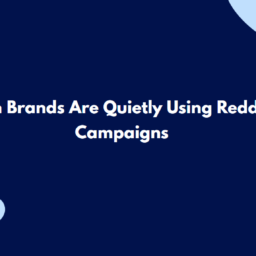In the competitive landscape of modern business, tracking the right metrics is crucial for evaluating and enhancing your sales and marketing efforts. These metrics provide insights into how well your strategies are performing, help identify areas for improvement, and guide data-driven decision-making. Here’s a comprehensive guide to the top metrics you should track for sales and marketing success.
1. Customer Acquisition Cost (CAC)
What It Is: CAC measures the total cost associated with acquiring a new customer. It includes expenses related to marketing, sales, and any other efforts to attract new clients.
Why It Matters: Understanding CAC helps assess the efficiency of your marketing and sales strategiesThe Importance of Social Media in Modern Marketing Strategies. A high CAC might indicate that your acquisition efforts are too costly or ineffective, while a low CAC suggests more efficient customer acquisition.
How to Calculate:
CAC=Total Cost of Sales and Marketing Number of New Customers Acquired\text{CAC} = \frac{\text{Total Cost of Sales and Marketing}}{\text{Number of New Customers Acquired}}CAC=Number of New Customers AcquiredTotal Cost of Sales and Marketing
2. Customer Lifetime Value (CLV or LTV)
What It Is: CLV estimates the total revenue a business can expect from a single customer over their entire relationship with the company.
Why It Matters: CLV helps gauge the long-term value of your customers and informs budgeting for acquisition and retention. A higher CLV indicates that your customers are likely to be more profitable over time.
How to Calculate:
CLV=Average Purchase Value×Purchase Frequency×Customer Lifespan\text{CLV} = \text{Average Purchase Value} \times \text{Purchase Frequency} \times \text{Customer Lifespan}CLV=Average Purchase Value×Purchase Frequency×Customer Lifespan
3. Conversion Rate
What It Is: The conversion rate measures the percentage of leads or visitors that take a desired action, such as making a purchase, filling out a form, or subscribing to a newsletter.
Why It Matters: This metric evaluates the effectiveness of your sales funnel and marketing campaigns in turning prospects into customers. A higher conversion rate indicates a more effective strategy.
How to Calculate:
Conversion Rate=Number of ConversionsTotal Number of Visitors or Leads×100\text{Conversion Rate} = \frac{\text{Number of Conversions}}{\text{Total Number of Visitors or Leads}} \times 100Conversion Rate=Total Number of Visitors or LeadsNumber of Conversions×100
4. Lead-to-Customer Ratio
What It Is: This ratio measures the percentage of leads that ultimately convert into paying customers.
Why It Matters: It helps assess the quality of your leads and the effectiveness of your sales process. A high lead-to-customer ratio suggests that your leads are well-targeted and your sales team is effective.
How to Calculate:
Lead-to-Customer Ratio=Number of New CustomersNumber of Leads×100\text{Lead-to-Customer Ratio} = \frac{\text{Number of New Customers}}{\text{Number of Leads}} \times 100Lead-to-Customer Ratio=Number of LeadsNumber of New Customers×100
5. Sales Growth Rate
What It Is: The sales growth rate tracks the increase or decrease in sales revenue over a specific period.
Why It Matters: This metric indicates how well your sales efforts are driving revenue growth. Monitoring it helps identify trends, forecast future performance, and adjust strategies as needed.
How to Calculate:
Sales Growth Rate=Current Period Sales−Previous Period SalesPrevious Period Sales×100\text{Sales Growth Rate} = \frac{\text{Current Period Sales} – \text{Previous Period Sales}}{\text{Previous Period Sales}} \times 100Sales Growth Rate=Previous Period SalesCurrent Period Sales−Previous Period Sales×100
6. Marketing Return on Investment (ROI)
What It Is: Marketing ROI measures the return you achieve from your marketing investments relative to the costs incurred.
Why It Matters: It helps evaluate the effectiveness of your marketing campaigns and ensure that your spending is generating a positive return. A high ROI indicates efficient use of your marketing budget.
How to Calculate:
Marketing ROI=Revenue Attributed to Marketing−Marketing CostsMarketing Costs×100\text{Marketing ROI} = \frac{\text{Revenue Attributed to Marketing} – \text{Marketing Costs}}{\text{Marketing Costs}} \times 100Marketing ROI=Marketing CostsRevenue Attributed to Marketing−Marketing Costs×100
7. Churn Rate
What It Is: The churn rate measures the percentage of customers who stop using your product or service during a given period.
Why It Matters: High churn rates can indicate issues with customer satisfaction, product quality, or market fit. Reducing churn is crucial for maintaining a stable and growing customer base.
How to Calculate:
Churn Rate=Number of Customers Lost During PeriodNumber of Customers at Start of Period×100\text{Churn Rate} = \frac{\text{Number of Customers Lost During Period}}{\text{Number of Customers at Start of Period}} \times 100Churn Rate=Number of Customers at Start of PeriodNumber of Customers Lost During Period×100
8. Customer Retention Rate
What It Is: This metric measures the percentage of customers who continue to do business with you over a specific period.
Why It Matters: A high retention rate signifies that your business is successful in keeping customers satisfied and engaged. It often costs less to retain existing customers than to acquire new ones.
How to Calculate:
Customer Retention Rate=Number of Customers at End of Period−Number of New Customers AcquiredNumber of Customers at Start of Period×100\text{Customer Retention Rate} = \frac{\text{Number of Customers at End of Period} – \text{Number of New Customers Acquired}}{\text{Number of Customers at Start of Period}} \times 100Customer Retention Rate=Number of Customers at Start of PeriodNumber of Customers at End of Period−Number of New Customers Acquired×100
9. Average Deal Size
What It Is: Average deal size measures the average revenue generated per closed deal or sale.
Why It Matters: This metric helps in forecasting revenue and evaluating the effectiveness of your sales strategies. A larger average deal size can indicate successful upselling or targeting of higher-value customers.
How to Calculate:
Average Deal Size=Total RevenueNumber of Deals Closed\text{Average Deal Size} = \frac{\text{Total Revenue}}{\text{Number of Deals Closed}}Average Deal Size=Number of Deals ClosedTotal Revenue
10. Website Traffic and Engagement
What It Is: Metrics such as total website visits, page views, and time spent on site measure how well your website attracts and engages visitors.
Why It Matters: Tracking website traffic and engagement helps assess the effectiveness of your content, SEO, and overall online presence. It also provides insights into user behavior and areas for improvement.
How to Track: Use web analytics tools like Google Analytics to monitor metrics such as page views, bounce rate, and average session duration.
11. Email Marketing Metrics
What It Is: Key email marketing metrics include open rates, click-through rates (CTR), and conversion rates for email campaigns.
Why It Matters: These metrics gauge the effectiveness of your email campaigns in engaging recipients and driving actions. High open and click-through rates indicate that your email content is resonating with your audience.
How to Track: Use email marketing platforms like Mailchimp or HubSpot to analyze these metrics and optimize your email strategies.
12. Social Media Engagement
What It Is: Social media engagement metrics include likes, shares, comments, and follower growth across your social media channels.
Why It Matters: Engaging social media content helps build brand awareness and drive traffic to your website. Tracking engagement metrics helps measure the effectiveness of your social media strategy.
How to Track: Use social media analytics tools provided by platforms like Facebook Insights, Twitter Analytics, or third-party tools like Hootsuite.




